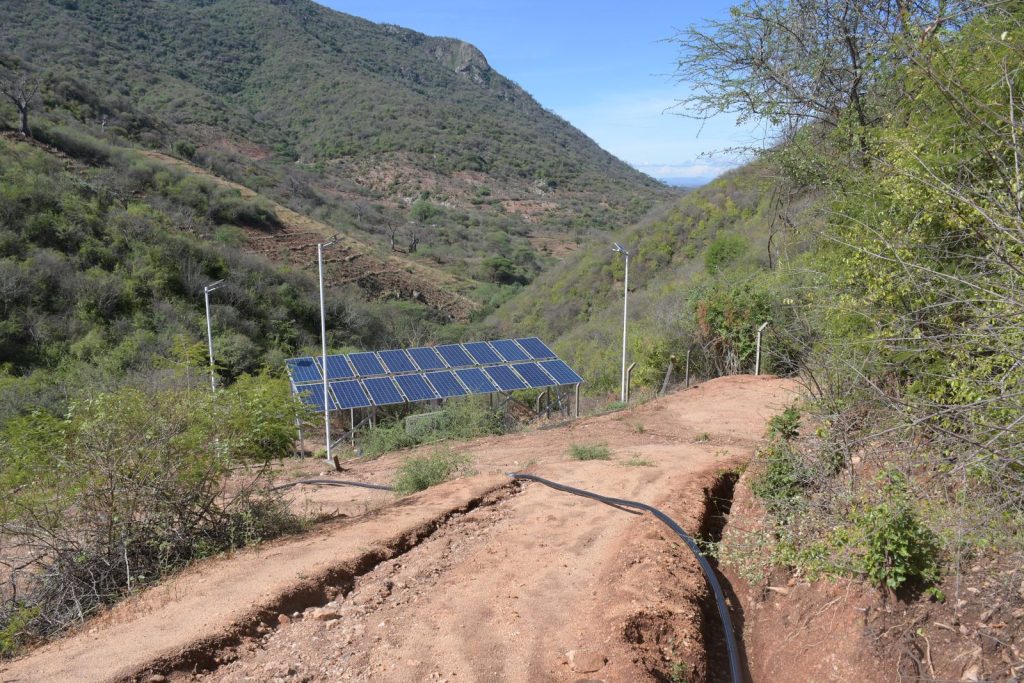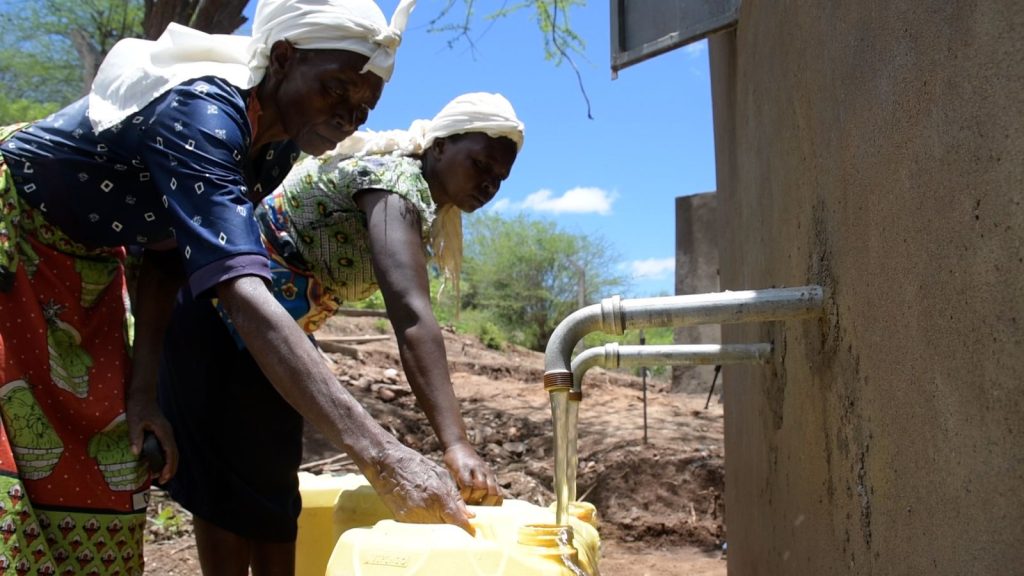Zero Emissions Day: How Solar Technology Can Effectively Replace Diesel Pumps for Water Distribution
Today is Zero Emissions Day, an occasion to remind us all of the harmful effects of carbon emissions on our Earth. To celebrate, we thought we’d highlight our increasing work on solar-pumped water projects.
In 2025, we’re planning two solar projects, both at healthcare facilities: one in Sierra Leone, and the other in Western Kenya. We’ve constructed solar water projects in the past, but these two projects have us incredibly excited because of the sheer amount of people we’re hoping they’ll help.

When healthcare facilities lack their own sources of water, it becomes incredibly difficult for staff to maintain a sterile environment and care for their patients. Doctors and nurses struggle to even wash their hands between patient visits, which increases the likelihood of cross-contamination. Often, we hear stories of healthcare staff who must forego their own duties to fetch water offsite.
With a solar distribution system to pipe water into sinks, bathrooms, and examination rooms, our new solar water sources could revitalize the health of thousands of people per water point.
With water onsite, healthcare staff will be better able to focus on treating patients rather than sourcing water or maintaining a sterile environment without it. Cleanliness standards will improve, preventing the spread of diseases. Inpatients will receive better care in terms of hygiene, nutrition, and hydration, improving recovery times and reducing the risk of complications. If the facility can produce excess water, it may even sell or provide water to nearby community members, generating income or fostering goodwill with the community.

Solar power is also a much cleaner energy source than other methods carbon-wise — for instance, in some areas without municipal power, populations resort to their own methods to bring water close to their homes, like diesel pumps. However, diesel emissions harm both the environment and the people living near the motor. Further, in communities that rely on diesel water distribution, access to water also depends on the affordability and availability of fuel. Solar options, though requiring a higher upfront cost for installation, eradicate these ongoing problems.
But solar water-pumping technology also has the potential to cause its own issues — as Alan MacDonald, head of groundwater at the British Geological Survey and of the IAH groundwater network for international development pointed out in a recent opinion piece for The Guardian. In his paper, MacDonald cautions those working in the water sector to closely monitor groundwater resources before installing solar water pumps to prevent depletion of groundwater reserves (which would be another drain on our Earth’s resources).
In anticipation of expanding our work in solar piped water systems, The Water Project has been working diligently to ensure that these systems will be equitable and sustainable long term. In Western Kenya, our teams collaborated with a hydrogeologist recommended by the Groundwater Relief network to install monitoring ports and track static water levels in the region over the past year. Our friends at the University of North Carolina Chapel Hill’s Water Institute then helped us to translate our groundwater monitoring data into a model that estimates water levels in the watersheds where we are working.
In Sierra Leone, our partners have been using newly acquired hydrogeological equipment to carry out their own hydrogeological surveys. This is done wherever we plan to drill a borehole, whether the planned project is fitted with a hand pump or a solar piped distribution system. The hydrogeological surveys help find the most effective site for the new well and ensure that sufficient groundwater is available before we initiate drilling.
We have learned a lot through these efforts to intentionally examine the groundwater situation where we work. In order to share our lessons and hear from others, The Water Project co-convened a side session at the 2023 UNC Water and Health Conference. The session brought together WASH researchers and practitioners to discuss the opportunities for and challenges to collecting and sharing reliable groundwater information. And we’re excited to say that The Water Project is currently in the final stages of publishing a conference proceedings paper that summarizes the event — and the lively discussion it sparked among key WASH stakeholders!
As we continue to plan the solar piped water systems scheduled for 2025, The Water Project strives to design and implement solar water solutions that reliably serve the staff and patients of the healthcare facilities, reduce carbon emissions, and protect groundwater reserves for generations to come.
Home More Like ThisTweet